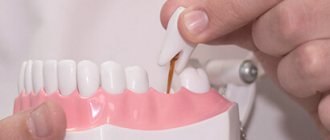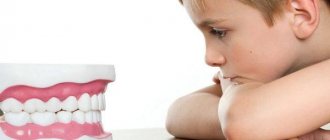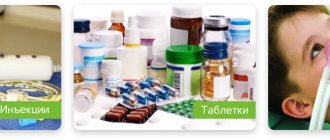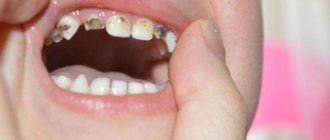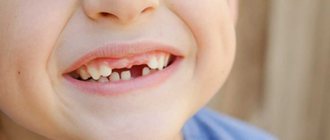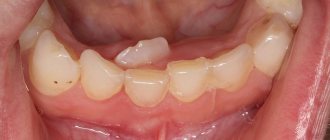The replacement of baby teeth with permanent ones is a natural physiological process that every child experiences. It usually begins in preschool age and proceeds without difficulty. But parents need to approach it responsibly, since any violations when changing teeth are fraught with unpleasant consequences. This may be the formation of a malocclusion, uneven teeth, or the occurrence of a diastema (interdental gap).
In this article we will consider the correct sequence of tooth replacement, possible violations, and situations when consultation with a pediatric dentist is necessary.
Why and when do baby teeth change?
As the child grows, the dentofacial apparatus also develops. At approximately 4–6 years of age, the preparatory stage begins, during which interdental spaces appear. This prepares the place for permanent teeth in the primary dentition.
The process of replacing baby teeth with permanent teeth is a slow process, taking approximately 6 or 7 years (until adolescence). Active growth of the roots of permanent teeth activates the process of bone resorption - this is the destruction (dissolution) of milk roots, which leads to loosening and tooth loss. Standard diagram of the sequence of changing baby teeth in a child.
- Central lower incisors (5–7 years). They fall out one by one with a short time interval.
- Lateral incisors (7–8 years).
- First molars on the upper jaw, second molars on the lower jaw (9–11 years)
- Cone-shaped teeth (canines) at the age of 9–12 years.
- Second molars on the upper jaw and first molars on the lower jaw (10–13 years)
Not everyone's third molars (wisdom teeth) erupt. This is considered the norm. Most often, the optimal age for them is considered to be from 17 to 25 years.
Reference!
The later the first teeth erupted in infancy, the later they will be replaced in preschool age.
By the age of 15–16, a teenager’s permanent bite should number 28 units.
Deadlines
At the age of five, teeth can become mobile. Then the process of loss and growth of new ones begins:
- six to seven years – lower and then upper central incisors;
- seven to eight years - the lateral incisors change;
- eight to ten years – first molars;
- nine to eleven years – fangs;
- eleven to thirteen are second molars.
The correct formation of the jaw depends on many factors: how the pregnancy proceeded, how long the child was breastfed, what infectious diseases were suffered, etc.
What deviations from the norm may there be?
Each child develops individually. Sometimes the timing of the replacement of certain teeth may differ from the generally accepted norm. Minor deviations are allowed up to 12 months. But sometimes the change in the primary bite begins too early or, on the contrary, the temporary teeth do not want to fall out.
Causes:
- long-term breastfeeding;
- severe infectious diseases in infancy;
- pathologies of intrauterine development.
Reference!
Dentists believe that a safer deviation is a late change in the primary occlusion than vice versa.
Let us consider in detail the common violations and their causes.
Early tooth loss
We can talk about such a pathology if a child’s baby teeth begin to fall out before the age of 5. Possible reasons:
- advanced multiple caries;
- injury;
- gum disease;
- manual loosening of the tooth.
In all these cases, consultation with a pediatric dentist is required.
Important!
Parents should record the time of tooth loss. If after 4 months the permanent tooth does not begin to emerge, then the help of a doctor is required.
In case of early unnatural tooth loss, it is advisable to conduct an X-ray diagnosis. This will help to identify possible damage to the permanent root rudiment in time and begin treatment. Otherwise, the child will need prosthetics in the future.
Late change from primary to permanent occlusion
The deadline for starting the process of changing baby teeth is 8 years. But this is considered a late shift. The disorder may be caused by:
- heredity;
- metabolic disorders;
- infectious diseases suffered in early childhood;
- mental disorders.
If after 8 years a child has not lost a single baby tooth, this is a reason to consult a doctor.
Which teeth should an eight-year-old child have?
Every child who has reached the age of eight should normally have the following permanent teeth - 4 lower and 4 upper incisors, sixth molars. Sometimes there may be individual deviations in teething within plus or minus six months.
Why is it necessary to treat caries in childhood if you then have to remove baby teeth with filled roots?
If an empty space forms in the dentition, this contributes to the fact that the remaining milk teeth shift, and along with them, the rudiments of permanent teeth also shift and they begin to grow incorrectly under them - in one place the formation of cracks begins, and in another - the teeth fit alone another. A filled, treated baby tooth will save space for a permanent tooth. Untreated teeth infect the rudiments of permanent teeth with infection, which causes their deformation and even complete absence.
Reasons for late eruption
Normally, after a baby tooth falls out, it takes 1-2 months for the permanent tooth to erupt. This is the longest period. In most cases, the rudiments of a permanent tooth can already be seen at the site of the lost tooth.
But, if a child’s toothless smile persists for 3 months or more, then this is a cause for concern for parents.
Let's consider why such dental pathology occurs:
- Retention
– a common condition that mainly affects the incisors and canines. They cannot erupt due to dense gums or because they rest against neighboring teeth. There are complete and partial retention. With the full form, a healthy root is visible in the picture, but it is completely under the gum. With partial retention, only part of the crown is visible. In this case, surgical assistance is required.
- Edentia
– a congenital pathology in which there is a lack of rudiments of permanent dental units. Can be complete or partial (sparse teeth). A rare disease. Orthopedic treatment is required as early as possible.
- Impact
– delayed eruption in this pathology is associated with a mechanical obstacle, that is, the child has a supernumerary of dental units. In this case, the permanent root simply does not have room to erupt. Impaction can only be detected using a panoramic x-ray of the jaw.
The sooner the child is examined by a doctor, the higher the chance of having an even and complete dentition.
What to do if the tooth, on the contrary, does not loosen
If a molar is already visible above the baby tooth, which is about to erupt, then this is a reason to visit an orthodontist. If such a baby tooth is not removed in a timely manner, then an expensive bite correction will be required to force the permanent tooth to fall into its proper place.
In this case, an orthopantomogram will also help, which will allow you to see where the molars are located.
Possible problems when changing baby teeth
Common dental pathologies when changing a primary dentition to a permanent one include:
- Shark teeth. A phenomenon in which baby and permanent teeth are located parallel to each other, in 2 rows. This arrangement can interfere with the normal development of the dental system. But in most cases, the temporary root becomes loose, and the “extra” tooth falls out on its own. If this does not happen, removal at the doctor's office is recommended.
- Increased pain. Sometimes a change in the milk bite is accompanied by increased body temperature, redness of the gums and severe pain. These symptoms usually accompany early or late change of teeth. Inflammatory diseases of the oral cavity may also be the cause.
- The appearance of a hematoma.
In rare cases, when molars erupt, a hematoma occurs on the gum in the form of a small bubble with an accumulation of blood. This occurs due to severe eruption, which leads to rupture of blood vessels. The gums may be pale in color. Pain and discomfort occurs. If suppuration occurs, medical attention is required.
If pathological phenomena do not go away for a long time, and the child is irritable and complains of pain, be sure to visit the dentist.
How to quickly stop bleeding
If you suddenly suddenly start bleeding from your gums, you can stop it in the following ways:
- slight bleeding of the gums can be stopped with plain cold water or a special mint mouth rinse (if you don’t have it, you can use chamomile or calendula tincture diluted in warm water);
- buy homeopathic protective strips for the gums at the pharmacy and stick them on the affected area;
- You can stop bleeding from the gums using a cotton swab soaked in chlorhexidine (apply tightly to the sore spot and wait until the bleeding goes away).
What not to do when baby teeth fall out
Incorrect actions of children and parents can lead to the formation of malocclusion, increased pain, or the formation of crooked teeth. To avoid this, it is recommended to adhere to the following rules:
- Don't help baby teeth fall out if they are straight and not loose. Even if, according to the child’s age, it is high time for him to have a toothless smile.
- Don't loosen your teeth with your hands. And do not pull them at home, for example, with a thread.
- Baby teeth are quite fragile in preschool age. Therefore, your child should not indulge in solid foods. The crown may break, but the root will remain in the gum.
- If a tooth falls out, do not allow your child to touch the socket with his tongue or hands. Gentle rinsing with antiseptic solutions or herbal decoctions is recommended.
If you have a fever, cough or lethargy, do not rush to resort to antiviral drugs. Poor health can be a harbinger of the imminent change of baby teeth.
Tooth loss: causes and methods of restoration
The method of restoration will be determined by why the tooth fell out.
Advanced caries or pulpitis. With insufficient hygiene and lack of treatment for caries, it turns into pulpitis, and hard tissues begin to collapse. The process is very painful, accompanied by inflammation, the crown gradually cracks, and the infection spreads to the pulp and root. When a tooth falls out, it feels like a relief: it will finally stop hurting. In practice this is almost always not the case:
- inflammation can affect periodontal tissue. Without treatment, the infection will continue to spread, affect surrounding tissues, and provoke new complications;
- Teeth destroyed by pulpitis do not always fall out completely. Collapse of the crown walls may occur, leaving the infected root in place.
Even if the pain goes away after a loss, this does not mean that the problem is solved. The absence of pain indicates the death of the nerve. It is accompanied by necrosis, which provokes the appearance of new foci of inflammation.
What to do: You need to see a doctor as soon as possible. It is better not to wait until the crown is completely destroyed. If it remains above the gingival margin, there is a chance to preserve the living root and perform restoration or prosthetics. If the crown is completely destroyed, the doctor will remove the remaining root and begin preparation for prosthetics. When the crown is destroyed by caries or pulpitis, diagnostics is needed: the dentist must evaluate the condition of the root, periodontal tissues, and nerves in order to prevent the development of inflammation and complications.
Periodontitis or periodontal disease. This is gum disease. They have different courses, but the result is the same: teeth become loose and fall out. However, they can be quite healthy. The problem is the condition of the gum tissue. Long before the loss, symptoms should appear: loosening, drooping of the gingival margin (tooth enamel is exposed), possible bleeding of the gums, itching, discomfort, and pain. If a tooth has already fallen out due to gum disease, the doctor must evaluate the condition of the gum and bone tissue in order to offer the patient implantation or prosthetics.
What to do: it is better to consult a dentist when the first symptoms appear (the gums begin to bleed, its edges droop, itching appears, a reaction to temperature stimuli). If the patient has not done this, more complex treatment will be needed. The periodontist must restore the normal state of the gums (relieve inflammation, normalize blood circulation, etc.). If such treatment is possible, implantation is performed next. If not, a removable or bridge prosthesis is installed.
Injury. A lost tooth may be healthy and your gums may be in normal condition. The recovery tactics will be determined by how exactly the crown was damaged and whether the root was preserved.
What to do: You need to urgently consult a dentist. If possible, a fallen crown should be preserved. If a patient breaks and swallows a tooth (or loses it or throws it away), prosthetics will be needed to restore the dentition. If a tooth falls out completely and is preserved, there is a chance that it can be returned to its place (it is placed in the hole and secured with a splint).
If a tooth is completely knocked out, you need to:
- stop bleeding in the hole (press with a sterile swab);
- quickly find the tooth, do not touch the root, grab only the crown;
- rinse it carefully in water (do not wipe it, do not wash it under running water);
- put in place (in the hole), fix (bite through gauze or tampon);
- contact your dentist immediately.
Healing is possible if the tooth can be returned to its place (put in the hole) half an hour (before the nerve dies). If you can’t do this yourself, it is placed in whole milk (not water) and delivered to the dentist. It is impossible to leave the tooth dry (not in milk), the nerve will die in a few minutes.
Prosthetics, implantation, restoration.
Leave a request, we will call you back within 5 minutes
+7
Tips for parents
During the period of teeth change, you should enrich your baby’s food with foods that are rich in calcium. To prevent inflammation in your mouth, make it a habit to rinse your mouth every time you eat or have a snack. As permanent teeth erupt, offer your baby soft or liquid foods. Avoid hot drinks.
If slight bleeding occurs when a baby tooth falls out, do not use alcohol tinctures. Apply a cotton ball to the wound and do not allow food for 2 hours. In order to promptly identify possible irregularities in the eruption of the permanent dentition, it is recommended to record the date of baby tooth loss.
Beautiful, straight and healthy teeth in adults are the result of proper care in childhood. Therefore, parents should teach their child proper oral hygiene from the first tooth.
Why shouldn’t bleeding gums be ignored?
Firstly, you will be haunted by bad breath, which will repel both those around you and those close to you. You will become more complex and less sociable.
And secondly, if you refuse treatment, you can lose healthy teeth. Bleeding gums can be caused by periodontitis, periodontal disease, stomatitis and gingivitis.
The treatment regimen includes:
- systematic professional teeth cleaning – removal of plaque and tartar;
- a course of physiotherapeutic procedures to relieve inflammation;
- sanitation of the oral cavity.
The next stage of treatment is home therapy: rinsing with disinfecting solutions (salt and soda, chlorhexidine).
For a purulent infection, the patient is prescribed antibiotics.
At home, you can independently use traditional medicine methods, including decoctions and infusions of medicinal plants:
- oak bark;
- chamomile flowers;
- sage herbs.
You can use these decoctions and calendula tincture as lotions on problem areas of the mouth.
Use of pharmaceutical products:
- fluoridated toothpastes with the addition of medicinal herbal extracts;
- dental anti-inflammatory gels (Cholisal);
- vitamin complexes.
